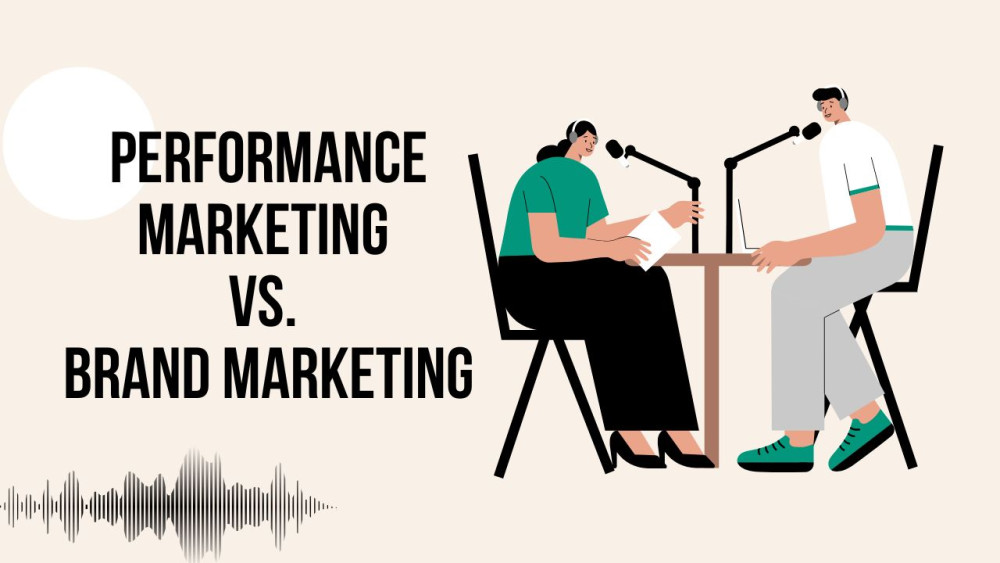Introduction: Two Sides of the Same Coin
In the ever-evolving world of digital marketing, two primary strategies drive business success—performance marketing and brand marketing. While both serve essential roles, they operate with distinct goals, methods, and success metrics. Some businesses focus on immediate results, while others invest in long-term brand building. The best marketing strategies often blend both approaches to create sustainable growth.
Understanding the difference between performance marketing and brand marketing can help businesses determine where to allocate resources and how to craft a well-rounded marketing strategy.
What is Performance Marketing?
Performance marketing is a data-driven approach focused on measurable actions, such as clicks, leads, and conversions. It is often associated with digital advertising channels where marketers pay for specific results rather than general exposure.
Key Features of Performance Marketing:
Performance marketing is focused on immediate ROI, as businesses can track real-time performance and adjust campaigns accordingly.
It is highly targeted, using data analytics to reach specific audiences based on demographics, behaviors, and interests.
The pay-for-performance model ensures that advertisers only pay for actual results, such as clicks, leads, or conversions.
It is highly scalable, as campaigns can be adjusted based on budget, audience response, and engagement levels.
Common performance marketing channels include paid search (Google Ads, Bing Ads), social media advertising (Facebook, Instagram, LinkedIn Ads), affiliate marketing, programmatic advertising, and retargeting campaigns. This approach is ideal for businesses seeking immediate customer acquisition, revenue generation, and measurable campaign effectiveness.
What is Brand Marketing?
Brand marketing focuses on building a strong, recognizable identity that resonates with audiences over time. Rather than driving instant conversions, brand marketing aims to establish trust, emotional connections, and long-term loyalty.
Key Features of Brand Marketing:
Unlike performance marketing, brand marketing is centered on long-term growth, helping businesses create a lasting brand image.
It engages customers through storytelling and emotional appeal, making a brand more relatable and trustworthy.
Brand marketing increases awareness, making it easier for businesses to stand out in competitive markets.
It fosters loyalty and advocacy, encouraging repeat purchases and organic referrals.
Common brand marketing channels include content marketing (blogs, videos, podcasts), social media engagement, sponsorships, public relations (PR), and influencer collaborations. This strategy is crucial for companies looking to differentiate themselves from competitors and create a loyal customer base that continues to support the brand over time.
Key Differences Between Performance Marketing and Brand Marketing
One of the most significant differences between performance marketing and brand marketing lies in their goals. Performance marketing focuses on immediate conversions and revenue generation, while brand marketing aims for long-term recognition and loyalty.
Another major difference is measurement. Performance marketing relies on clear, quantifiable metrics like clicks, conversions, and return on ad spend (ROAS). In contrast, brand marketing success is often measured through engagement, brand awareness, and customer sentiment.
The approach also differs. Performance marketing is highly data-driven and analytical, leveraging AI and machine learning for precise targeting and optimization. Brand marketing, on the other hand, is more focused on storytelling and creating a brand personality that resonates with the audience.
The timeframe is another key distinction. Performance marketing delivers short-term, immediate results, making it ideal for businesses needing quick customer acquisition. Brand marketing, however, builds a strong foundation for sustainable growth and customer retention over time.
Lastly, there is a difference in budget allocation. Performance marketing typically involves a pay-per-click or conversion model, where businesses allocate budgets based on expected immediate returns. Brand marketing requires consistent investment in content, advertising, and community engagement without expecting immediate financial returns.
Which One is Right for Your Business?
The decision between performance marketing and brand marketing depends on business goals, budget, and industry. Startups and e-commerce brands may focus more on performance marketing to drive sales, while established companies often invest in brand marketing to maintain a strong presence.
However, the most effective strategy is a combination of both. For instance:
Running Google Ads for immediate conversions while maintaining a strong brand presence on social media.
Investing in SEO and content marketing to boost organic reach while using retargeting ads to convert engaged visitors.
Sponsoring an industry event for brand awareness while running an affiliate program for direct sales.
Conclusion: Balancing Both for Long-Term Success
Performance marketing and brand marketing are not mutually exclusive; they complement each other. A well-balanced marketing approach leverages performance strategies for short-term wins and brand-building efforts for sustained growth. Businesses that master the art of blending these two will position themselves for lasting success in an increasingly competitive digital landscape.


